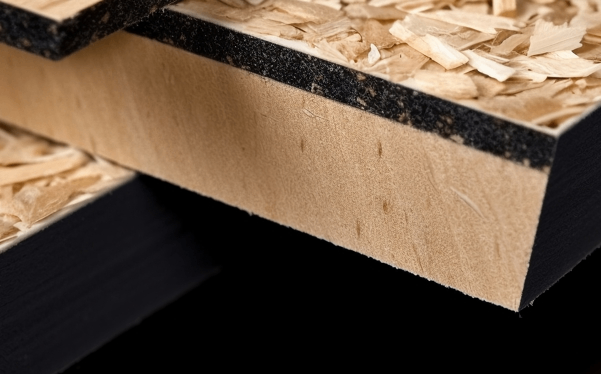In the global artificial board market, medium density fiberboard, with its characteristics of uniform material and easy processing, is widely used in many fields such as furniture manufacturing, interior decoration, packaging, etc., and occupies an important position. In recent years, China's MDF industry has developed rapidly, and its influence in the international market has been continuously enhanced, and its import and export market presents a unique situation.
Image Source:699pic
Export: Scale Growth and Market Layout
In recent years, China's MDF export volume has maintained a steady growth trend. According to relevant data, in the past few years, China's MDF export scale has continued to expand, and there has been a significant increase in 2023 compared with previous years, reflecting the gradual enhancement of the competitiveness of China's MDF in the international market.
In terms of the distribution of export markets, China's MDF is mainly exported to Southeast Asia, the Middle East, Africa and other regions. Saudi Arabia, Nigeria and the United Arab Emirates are the main destinations for China's MDF exports. In Southeast Asia, with the local economic development and the advancement of infrastructure construction, the demand for MDF is constantly rising. Chinese MDF, with its cost-effective advantages, has gradually expanded its market share in this region. In Africa, the rapid urbanization process has driven the development of the construction and furniture industries, creating a broad market space for Chinese MDF. For example, Nigeria has a strong demand for various types of boards. Chinese MDF, with its rich variety and moderate price, meets the market demand at different levels in the local area and has become an important source of raw materials for local construction and furniture manufacturing enterprises.
Import: High-end Demand and Supply Pattern
In terms of imports, China mainly imports high-quality MDF products from regions such as Europe and North America. The MDF production technology in these regions is advanced, and the products have obvious advantages in terms of quality, environmental performance, and special properties (such as high strength, moisture resistance, fire resistance, etc.), which can meet the needs of the domestic high-end market and industries with special requirements for product performance.
Take Europe as an example. MDF production enterprises in countries such as Germany and Finland adopt advanced production processes and equipment, and strictly control the selection of raw materials. The produced MDF not only has an extremely low formaldehyde emission, meeting the high international environmental protection standards, but also performs excellently in physical properties such as the flatness and strength of the board. These products are mainly used in domestic high-end furniture manufacturing, star hotel decoration, high-end electronic product packaging and other fields. In North America, the MDF industry in the United States and Canada is also developed. Products such as oriented strand board (OSB) produced by them, with their unique structure and performance, are favored in the application of structural materials such as roofs and walls in the domestic construction industry.
From the perspective of the change trend of import volume, although the overall scale is relatively smaller than the export volume, with the domestic consumption upgrading and industrial structure adjustment, the demand for high-end MDF shows a steady upward trend. Especially in some first-tier cities and economically developed regions, consumers' pursuit of high-quality home products has driven the growth of the demand for imported high-end MDF.
Influencing Factors and Future Prospects
There are many factors influencing China's MDF import and export. In terms of exports, fluctuations in raw material costs have a significant impact on enterprises. Wood, as the main raw material of MDF, its price is affected by factors such as the global wood resource supply, international wood trade policies, and forest protection policies. The fluctuation of the RMB exchange rate cannot be ignored either. The appreciation of the RMB will make the price of export products relatively higher, reducing their price advantage in the international market; conversely, the depreciation of the RMB is conducive to exports. At the same time, the tariff adjustments and trade barriers brought about by international trade frictions have a great impact on MDF exports.
In terms of imports, the development status of the domestic real estate market directly affects the demand for high-end MDF. When the real estate market is booming, the demand for various types of boards in the decoration and furniture industries increases, driving up the import volume of high-end MDF; on the contrary, when the market is sluggish, the import demand will also decrease accordingly. In addition, the domestic artificial board industry policies have a significant impact on imports. If the policies encourage the production of environmentally friendly and high-end products, it will stimulate enterprises' demand for imported high-end raw materials and technical equipment, and promote the import of related products.
Looking ahead, with the gradual recovery of the global economy and the development of emerging market countries, the international market demand for MDF is expected to further expand. Chinese MDF export enterprises should seize the opportunity, increase investment in technology research and development, improve product quality and environmental standards, transform towards medium and high-end products, and expand their international market share. In terms of imports, with the continuous growth of the domestic market's demand for high-quality products, it is expected that the import volume of high-end MDF from Europe, America and other regions will maintain a stable growth trend. At the same time, it will also prompt domestic enterprises to strengthen technical exchanges and cooperation with international advanced enterprises, and promote the overall upgrading of the domestic MDF industry.
